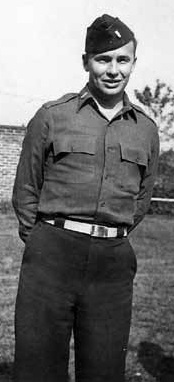Memoir of India
I was drafted in 1943 at age 27, and it came as quite a surprise. I was so thin and underweight I
was originally classified as 4F, but after an appendectomy I was suddenly 1A and was drafted. I was
one of the oldest to be inducted.
I was still living with Aunt Mae at the time. When I had to have my appendix taken out, my
friend Dan Mayer would come visit me and try to make me laugh.
I went through the reception center at Camp Blanding outside Jacksonville, and because my
test scores were high and I had a college degree, I was assigned to Headquarters Company giving
tests and interviewing draftees as they came through. I did manage to see my own test scores, and
found I tested at near-genius level.
The Army was really something it was a real shock to be with men from different backgrounds,
especially to hear their foul language! I got sick from a bad yellow-fever shot and had jaundice for a
month in the base hospital.
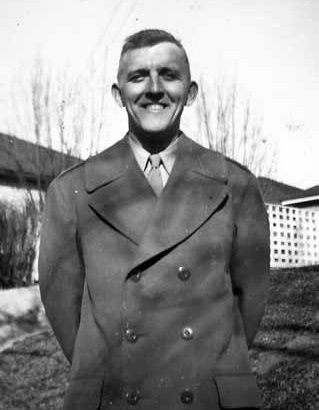
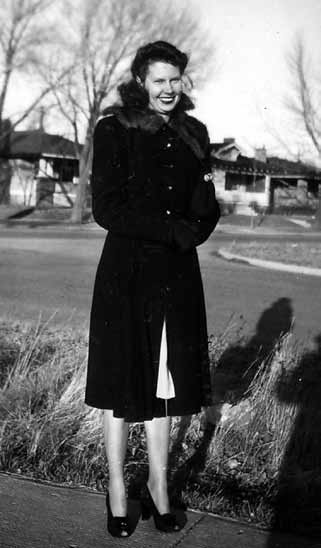
John and Peggy Hodgkin, 1944
|
I had traveled in the Southern U.S. a lot with the University of Florida Glee Club, but now I was
in charge of taking groups of men from one location to another. Among other states, I was sent to
Camp Lee, Virginia, where I saw snow for the first time.
I decided the Army might be more bearable as an officer
than an enlisted man, so I applied for Officer Candidate School,
Quartermaster One and was accepted and went through that
tough training at Camp Lee, Virginia. Also in the company was
John Hodgkin. We became very good friends and after graduation
were assigned to some of the same places Mess Officer s
School at Ft. Sam Houston in [San Antonio, in June 1943], and
American Institute of Baking in Chicago [in July-August 1943,
a 5-week program], to become Bakery officers. Since the Army
did not provide a place to live, three of us [John, Larry Creed,
and I] took a room in the Knickerbocker Hotel somewhat
crowded with three beds, but it was okay.
John was engaged to Peggy at the time, and later I played
for their wedding service at an Episcopal Church in Falls
Church, Virginia on an electric Hammond organ. Not having
any printed music available, I just played the Wedding March
more or less as I remembered it. We still exchange Christmas
cards to this day.
During bakery training, we were sent to Fort Warren,
Wyoming [from October 1943 to March 1944], and once were
sent on field maneuvers to set up a bakery field unit in a very
difficult location. We slept in two-man pup tents with only
candles to keep warm. The next morning when we awoke, the
tent was covered with a wet, heavy snow which later turned
everything to mud. In spite of it all, we did manage to get the
field oven set up for use, however.
I was assigned to a bakery company in Ft. Devon, Massachusetts
which was just leaving for L.A. to board ship for
India. We left the Port of L.A. in a big Liberty troop ship [the
U.S.S. General A.E. Anderson] full of soldiers on September
26, 1944. The Pacific was, of course, full of Jap submarines,
so we had to go far south to avoid them. We went underneath
Australia and stopped in Melbourne, but they wouldn t let us
leave the ship.
Letter from John Hodgkin, May 10, 1998, enclosing photos:
A side light to Harry s and my friendship. Memory fades as the years go but
I think it was one of our duty stations, probably Ft. Warren, Cheyenne, [Wyoming]
where the improbable happened.
I had just been married a very short period (Harry played the organ at the
wedding) when we arrived at Ft. Warren late in the p.m. Rooms were damned near
impossible to get at that hour.
We finally found a one-bedroom with two beds, Harry, my wife and I. Yes,
Harry in one bed, my wife and I in the other. We survived and in the morning
reported to the base for duty and for us to make other arrangements. My question
to this day - Did Harry peek?
Peggy and I send our very best to you both. - John Hodgkin
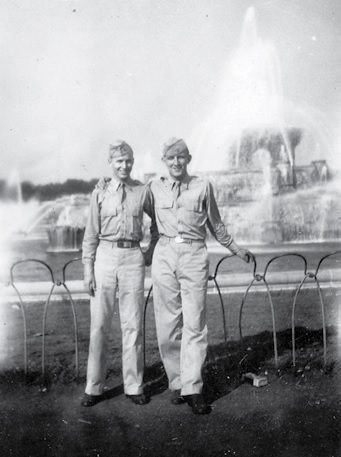 And we still won the war!!
And we still won the war!!
|
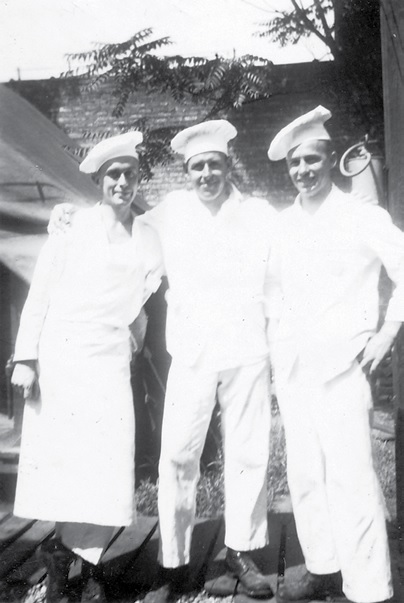 Can you imagine bread from
this trio? I am sure that our crew
were the first to bake sour dough
bread. Chicago Institute of Baking
Can you imagine bread from
this trio? I am sure that our crew
were the first to bake sour dough
bread. Chicago Institute of Baking
|
|
|
|
John Hodgkin and Dad visiting the Alamo in San
Antonio, TX in June 1943, while the company was
stationed at Ft. Sam Houston.
|
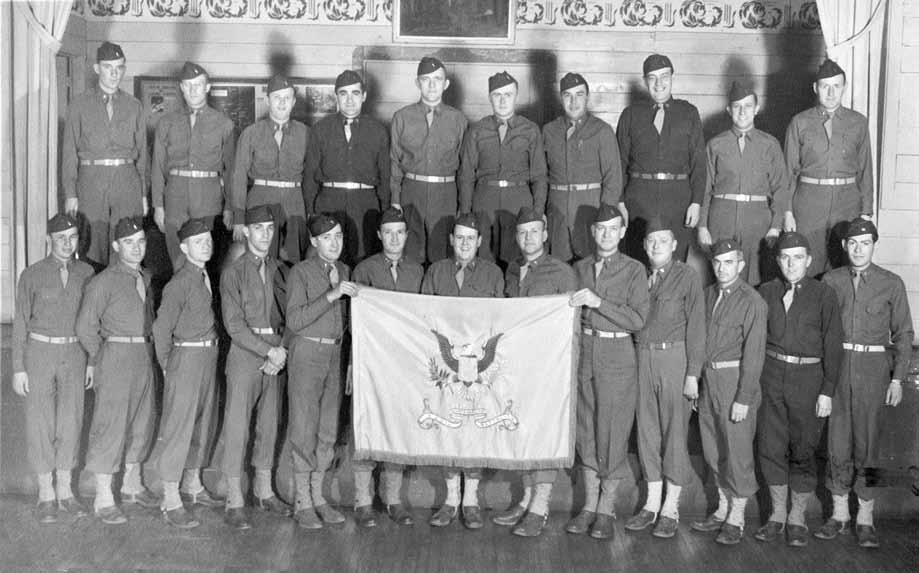 630th Quartermaster Battalion, Ft. Warren, Wyoming, early 1944. Dad is the first soldier
on the far left, bottom row.
630th Quartermaster Battalion, Ft. Warren, Wyoming, early 1944. Dad is the first soldier
on the far left, bottom row.
|
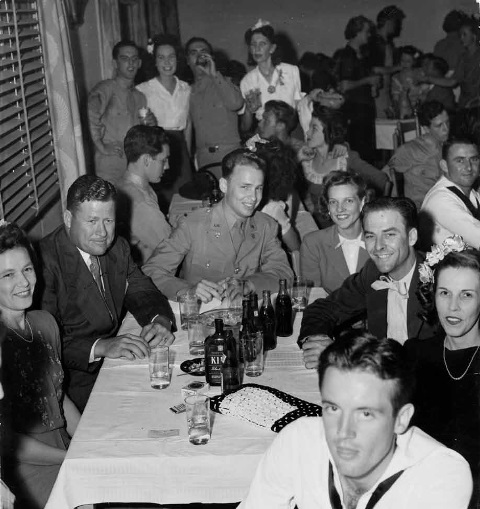 Dad on leave in April, 1944, just before he was shipped overseas. At left are Wilbur and
his wife Margaret; at right are Frank and his wife Dot. Unknown woman next to Dad.
Dad on leave in April, 1944, just before he was shipped overseas. At left are Wilbur and
his wife Margaret; at right are Frank and his wife Dot. Unknown woman next to Dad.
Dad may have enjoyed a stop in New Orleans during this same leave; he saved a menu
(in French) from a Restaurant Antoine at 713-717 St. Louis Street, New Orleans. Specialties
included les crabs moux frits, le pigeonneaux royal sauce paradis, and les riz deveau financiere.
|
|
|
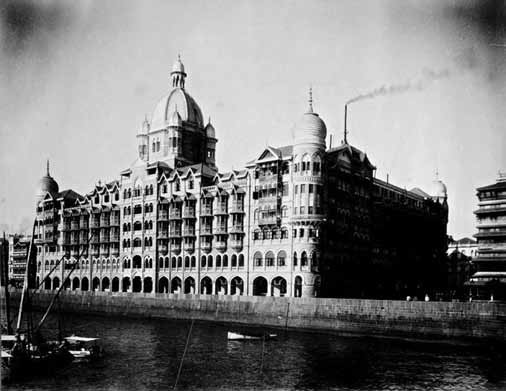 The Taj Majal Hotel in Bombay.
The Taj Majal Hotel in Bombay.
|
The trip itself was uneventful I didn t
get seasick, and we watched the flying fish. It
was a peaceful but dark sea.
We landed at Bombay on October 29,
1944, which we could smell from miles away.
I got to visit the Taj Majal Hotel in Bombay a
British tea planter staying there invited some
troops up to look at his room. I remember
mostly the creaky old elevator.
From Bombay, they loaded us on an
Indian train heading north on the narrow
gauge railway. They were wooden coaches
with no train seats, just hard wooden
benches, and the toilet was a compartment
with a hole in the floor. At the station, somebody set
off a bug bomb and I remember seeing the roaches
come pouring out of the car!
When we got to the Brahmaputra River, we boarded a paddle boat to go up the river north of
Calcutta to Dibrugarh in Assam, where our company headquarters was to be located. There, the
company split into three platoons of about 16 people each. One went to the Burma Road to bake
bread for the troops there. I was in charge of a platoon which was sent downriver to Jorhat, a little
town on the Brahmaputra River.
The river was always in sight. It was the custom to bury the dead by building a funeral pyre
called a ghat , setting fire to it and pushing it out into the river. I remember the Brahmaputra had
burning ghats in it.
Our job was to bake bread for the nearby Air Force Base to supply the airmen flying bombing
missions over the Burma Pass and into Japan. We set up field ovens heated with kerosene, and my
troops baked bread. We had a motorized mixer and a big vat for the dough to rise in, and large tables
to make the dough into loaves. All of this in a bamboo shed with woven bamboo walls and thatched
roof.
The men in my platoon were mostly Italians from Waterbury, Connecticut. Life in the camp was
not all that bad, but all we had to drink was powdered milk. The Italian soldiers tried to cook pizza
once, using bread dough, canned tomatoes, and American cheese no herbs. It didn t taste very
much like pizza, and they never tried it again.
The rains came and we survived one real monsoon. For the most part, though, monsoon season
meant it drizzled all the time, but it wasn t heavy rain.
It was my job to censor all the mail that went out to wives and girlfriends. They couldn t mention
where they were. What they were writing was, they couldn t wait to get home.
I was a Second Lieutenant, and had a driver named Dominick Verraster who drove me around
in the bread truck and the jeep. The troops were paid in cash, and I had to drive to the finance office
to pick up the payroll with a rifle over one shoulder!
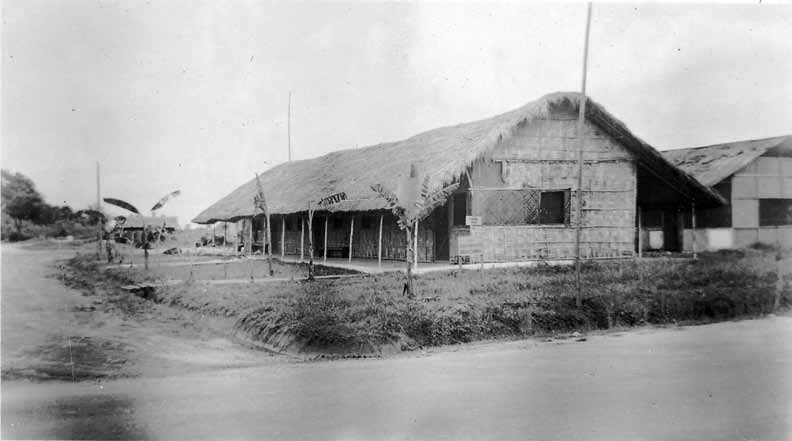 Our bakery buildings were grass huts
Our bakery buildings were grass huts
|
|
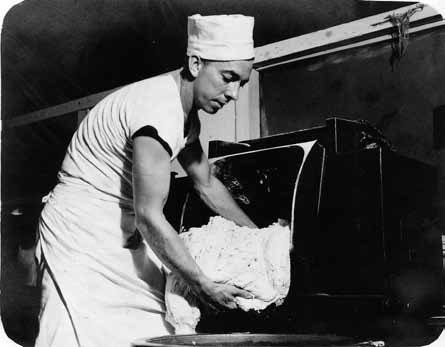 Taking dough out of mixer
Taking dough out of mixer
|
Cutting and molding the dough
|
 Molding and panning
Molding and panning
|
The finished bread
|
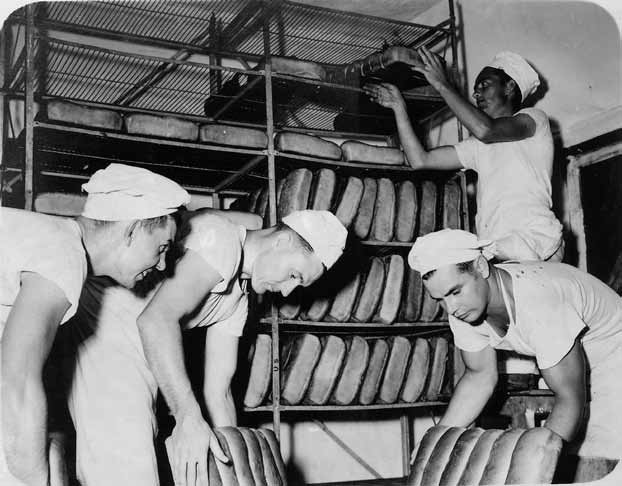 Stacking bread to cool
Stacking bread to cool
|
|
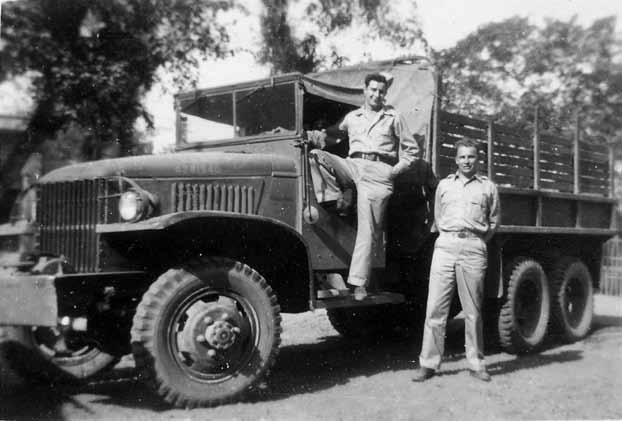 Ready for a short trip, with driver (Dominick Verraster) and truck. Assam, India, February 1945
Ready for a short trip, with driver (Dominick Verraster) and truck. Assam, India, February 1945
|
|
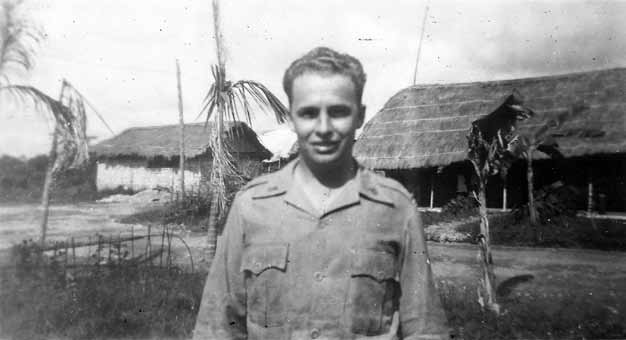 Wearing a bush jacket in Jorhat
Wearing a bush jacket in Jorhat
|
|
A hill man, and a woman from the Naga Hills
|
In Jorhat, we lived in a bamboo
building, where I had my own room.
The town was near the Tibetan border,
and I remember once some Tibetans
came down out of the mountains with
yak butter as pomade in their long
hair. There were still Japanese in
Burma, but we didn t see any.
The only leave time I had in the
year and a half I was in India was one
week in Calcutta (September, 1945).
When your leave arrived, they would
fly you to Calcutta and put you up with
several other soldiers in a room.
I hadn t met Claire yet I didn t
even have any girlfriend at all -- but
thought some day I would marry, and so I bought a lovely
blue-sapphire with two diamonds in a thin band as an engagement
ring in a jewelry shop in a hotel in Calcutta. I also bought
other unset stones, including a big, red ruby and a white
sapphire from a small village jeweler in Jorhat. The two ebony
elephants with ivory tusks I brought back were purchased
from the local English missionaries who ran a leper colony.
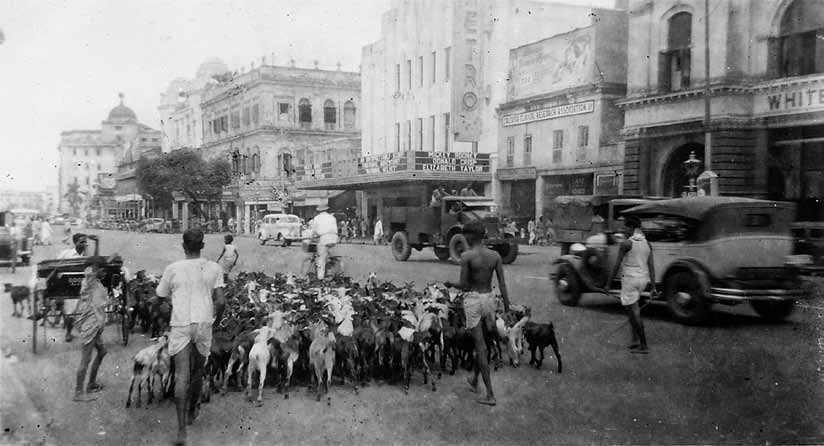 View of Calcutta s main street while I was on leave in September, 1945. Goats, pedestrians,
military vehicles, bicycles, large-wheeled carts, and autos all shared the road. The movie
theater on the right was showing National Velvet with Elizabeth Taylor and An Unforgettable
Story with Mickey Rooney.
View of Calcutta s main street while I was on leave in September, 1945. Goats, pedestrians,
military vehicles, bicycles, large-wheeled carts, and autos all shared the road. The movie
theater on the right was showing National Velvet with Elizabeth Taylor and An Unforgettable
Story with Mickey Rooney.
|
|
I also brought back an ebony and ivory chess set, which we ve given to Jimmy, and some very fine,
hand-made lace cloths.
I had no contact with music while I was in India, and no access to an instrument. I did compose
a little I set some poems to music that had been sent to me by an older woman in Miami named
Harriet Leonard. She would send me poetry, and I would compose music to fit it without an instrument!
I later studied composition with Leroy Baumgartner at Yale for my minor.
I was glad to hear the news of the A-bomb being dropped, because it meant the end of the war at
last. I left Calcutta on a troop ship, went through the Straits of Singapore, out across the South China
Sea (which was very rough water), to Manila. We were allowed to go ashore to look around Manila.
I went through the Governor s Mansion, and saw his Steinway M with the case full of bullet holes.
Back Home Again
The sea voyage home [aboard the U.S.S. General W.F. Hase] took a couple of months. We were
supposed to land in Seattle, but landed in San Francisco instead, on my 30th birthday: March 8,
1946. What a wonderful present!
A bunch of us had heard of the Top O The Mark in San Francisco, a lounge on the top floor
of the Mark Hopkins Hotel with a fabulous view. So we went there to have a beer and celebrate our
return. Then on to Camp Gordon, Virginia, which was the separation center, and home to Miami.
I had a lot of leave time accumulated when I left the Army, and was able to buy a car. As long as
I was on terminal leave, I could wear my uniform and had an income. I had also saved quite a lot. I
decided to apply to Yale Music School, and was given the date of auditions.
Details from Separation Qualification Record and Certificate of Service
Bakery Officer: Was Bakery Officer in a Bakery Company [115th QM Bakery Co.] for 12 months
and was Instructor in Basic Training at a Quartermaster Replacement Training Center for 6 months
in garrison. Was Bakery Officer in a Quartermaster Bakery Company for 17 months in India. Was
Platoon Leader in charge of a Field Bakery; furnished bread for 7500 troops.
Date of Entry into Active Service: 14 May 1943 [Was enlisted man from 12 Feb 1942 to 13 May
1943. Highest rank held [as enlisted man] was Technician, 4th Grade, DEML. Was a classification
specialist.]
Relieved from Active Duty: 11 Feb 1946 [date of departure]; arrived 8 Mar 1946; on Terminal
Leave from 20 Mar 46 to 10 Jun 46. (1 year 7 mo. 15 days Continental Service ; 1 yar 5 mo. 12 days
Foreign Service ).
Date of Separation: 10 June 1946 Place of Separation: Separation Center, Camp Gordon, Ga.
Grade: 1st Lt.
Schools: Quartermaster School, Camp Lee, Va., Officer Candidate Course, 13 weeks; Officers
Special Course, 6 weeks. Bakers and Cooks School, Ft. Sam Houston, Tx, Mess Management, 4
weeks. American Institute of Baking, Chicago, Ill., Advanced Banking Instructors Course, 5 weeks.
Decorations and Citations: Asiatic-Pacific Campaign Medal; American Campaign Medal;
World War II Victory Medal.
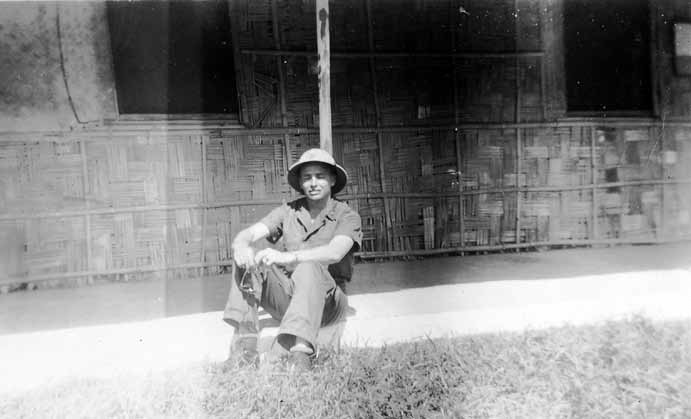 Relaxing after a day in India s sun.
Relaxing after a day in India s sun.
|
|
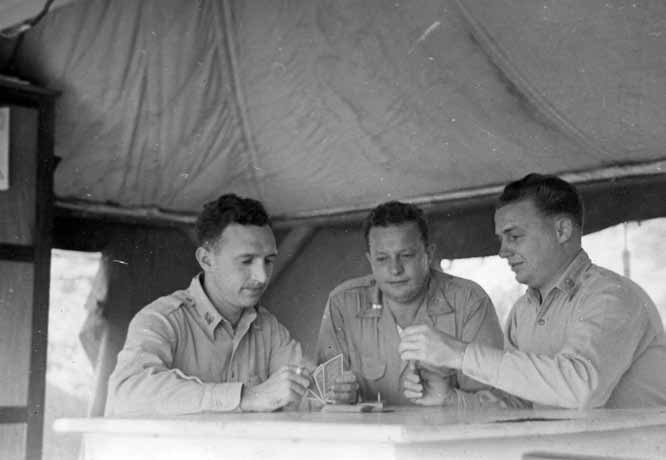 Playing cribbage with the two other company officers: Hexter, Fischler, and me.
Playing cribbage with the two other company officers: Hexter, Fischler, and me.
|
|
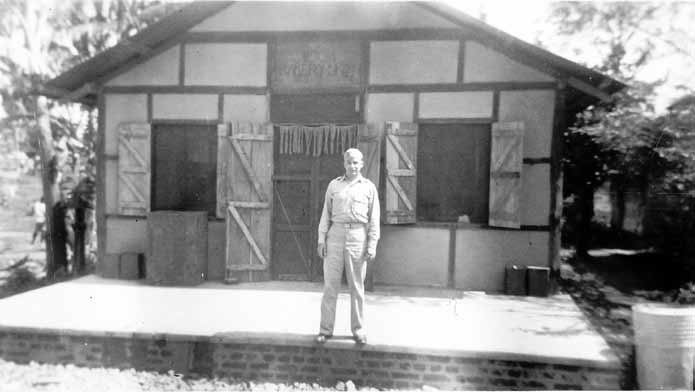 115th QM Bakery Unit
115th QM Bakery Unit
|
|
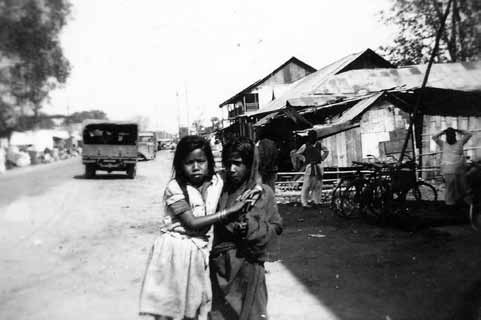 Urchins in Jorhat
Urchins in Jorhat
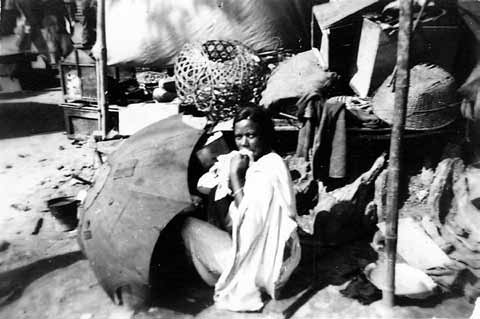
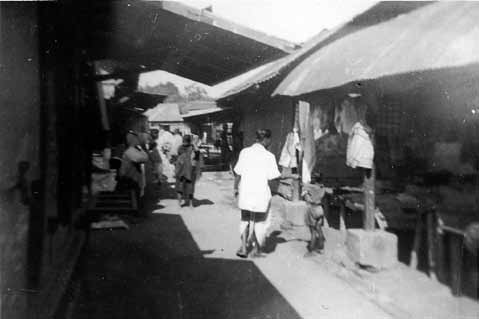 Jorhat bazaar
Jorhat bazaar
|
|
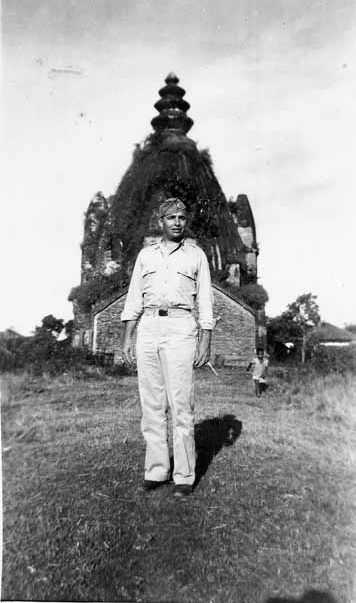 300 year old Hindu shrine to sacred bull, between Jorhat and Sibsagar, a short jaunt from Jorhat
300 year old Hindu shrine to sacred bull, between Jorhat and Sibsagar, a short jaunt from Jorhat
 Statue in Dibrugarh, India, Dec. 1944
Statue in Dibrugarh, India, Dec. 1944
|
|
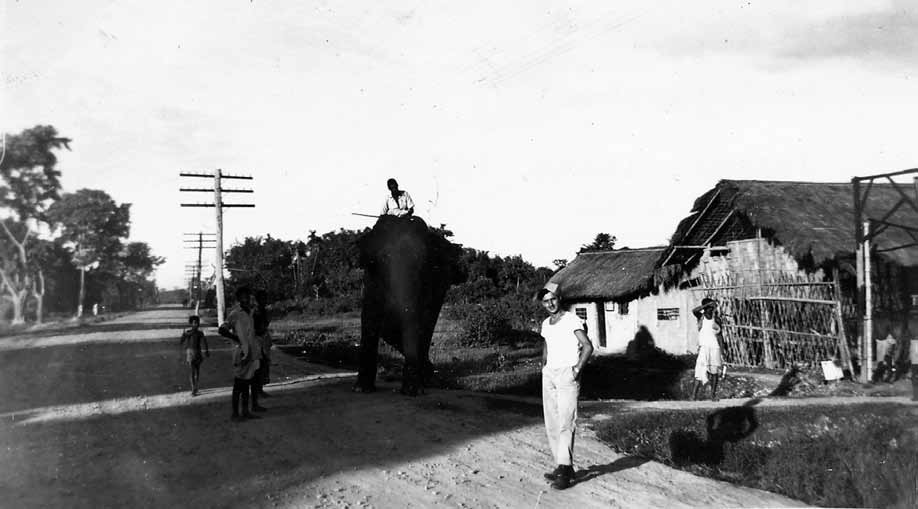 Work elephant, Assam, August 1945.
Work elephant, Assam, August 1945.
|
|
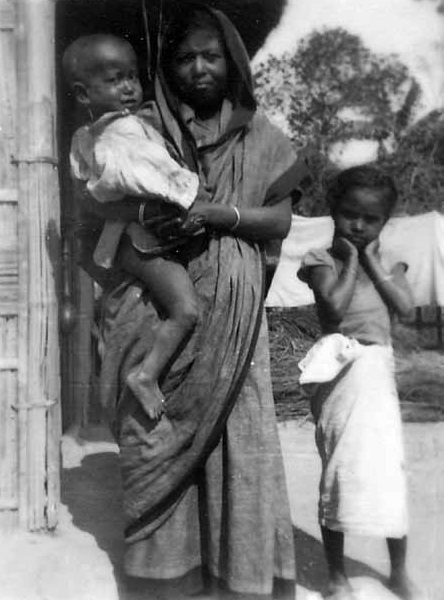 Kids, Jorhat
Kids, Jorhat
|
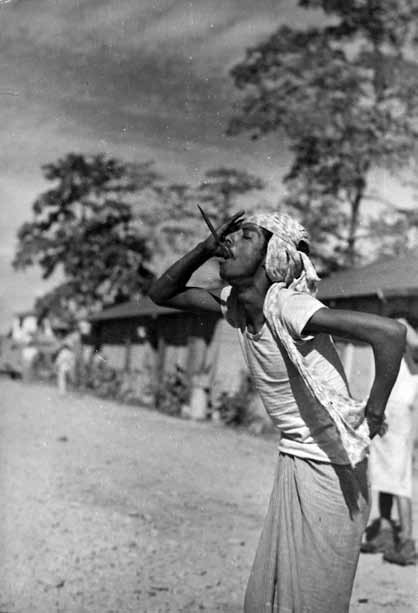 Knife swallower
Knife swallower
|
|
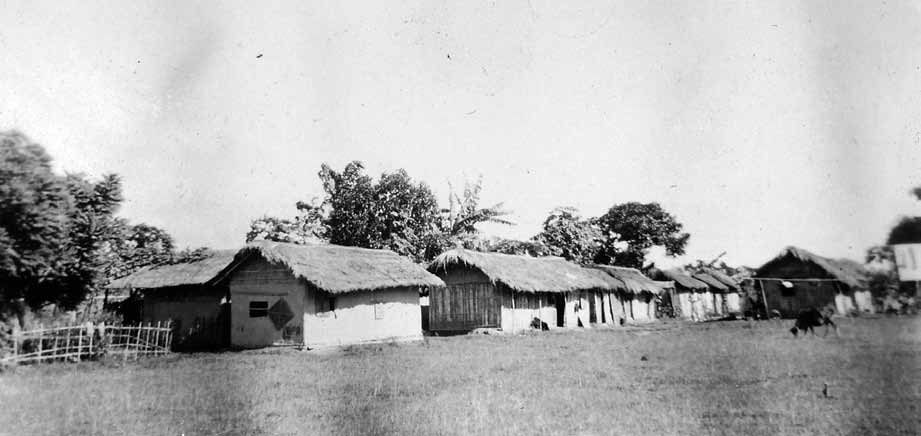 Lepers homes
Lepers homes
|
|
Dr. Mary E. Kirby, an American
medical missionary, head of leper
colony in Assam. I bought a pair of
carved ebony elephants with ivory
tusks, an ebony and ivory chess set
and some fine lace cloths from the
English missionaries here.
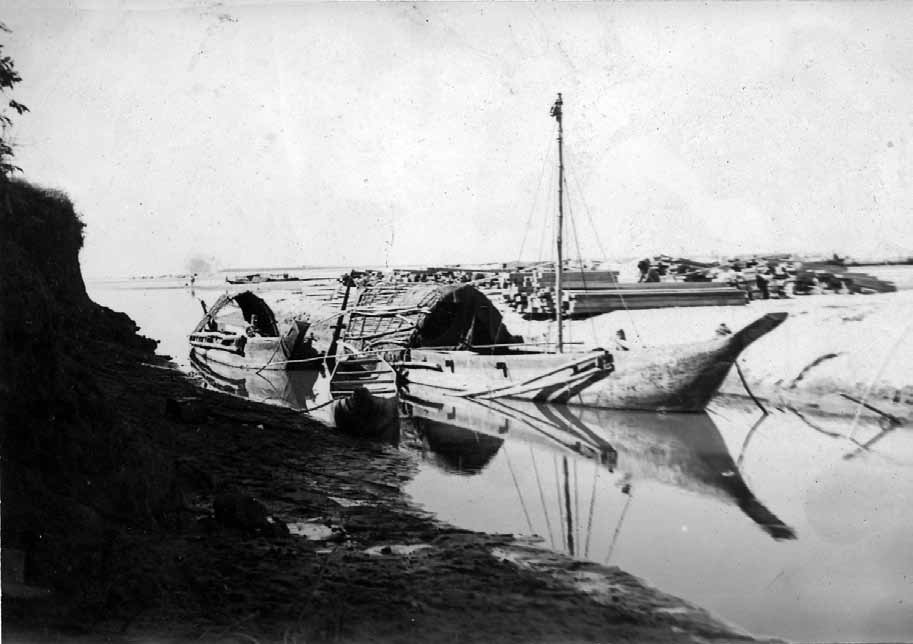 Native sampans on the Brahmaputra River
Native sampans on the Brahmaputra River
|
|
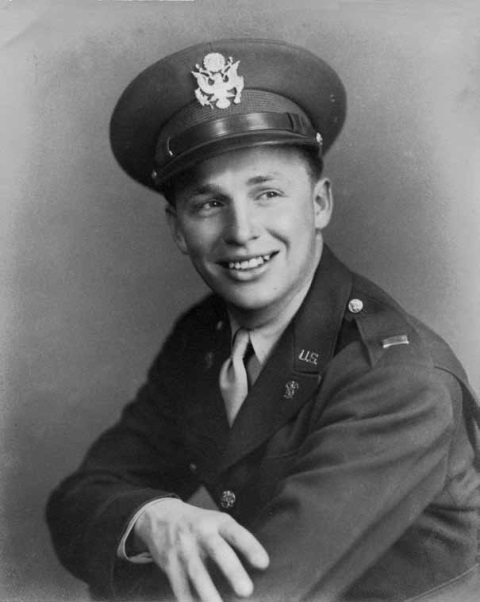
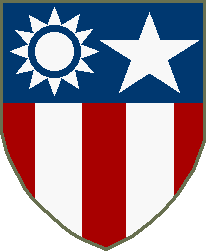



 And we still won the war!!
And we still won the war!!
 Can you imagine bread from
this trio? I am sure that our crew
were the first to bake sour dough
bread. Chicago Institute of Baking
Can you imagine bread from
this trio? I am sure that our crew
were the first to bake sour dough
bread. Chicago Institute of Baking
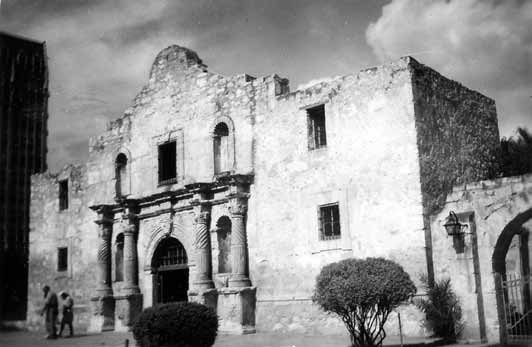

 630th Quartermaster Battalion, Ft. Warren, Wyoming, early 1944. Dad is the first soldier
on the far left, bottom row.
630th Quartermaster Battalion, Ft. Warren, Wyoming, early 1944. Dad is the first soldier
on the far left, bottom row.
 Dad on leave in April, 1944, just before he was shipped overseas. At left are Wilbur and
his wife Margaret; at right are Frank and his wife Dot. Unknown woman next to Dad.
Dad on leave in April, 1944, just before he was shipped overseas. At left are Wilbur and
his wife Margaret; at right are Frank and his wife Dot. Unknown woman next to Dad.
 Our bakery buildings were grass huts
Our bakery buildings were grass huts

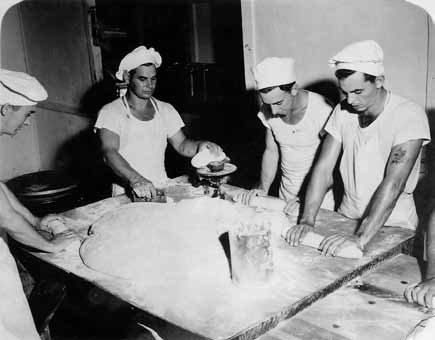

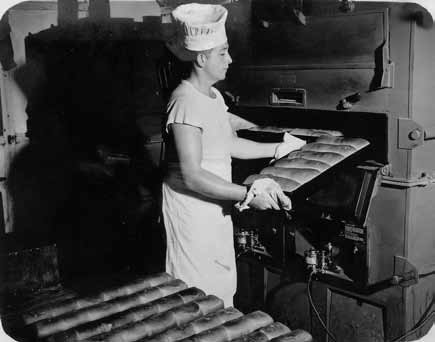
 Stacking bread to cool
Stacking bread to cool
 Ready for a short trip, with driver (Dominick Verraster) and truck. Assam, India, February 1945
Ready for a short trip, with driver (Dominick Verraster) and truck. Assam, India, February 1945
 Wearing a bush jacket in Jorhat
Wearing a bush jacket in Jorhat
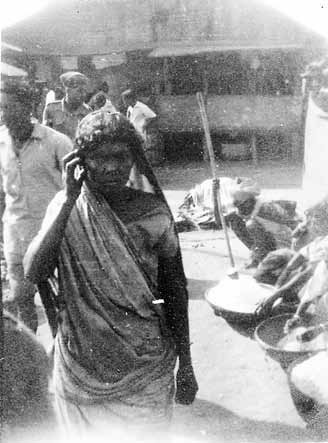
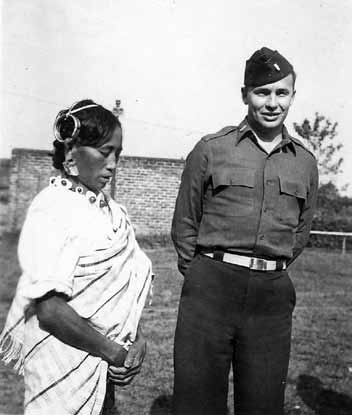
 View of Calcutta s main street while I was on leave in September, 1945. Goats, pedestrians,
military vehicles, bicycles, large-wheeled carts, and autos all shared the road. The movie
theater on the right was showing National Velvet with Elizabeth Taylor and An Unforgettable
Story with Mickey Rooney.
View of Calcutta s main street while I was on leave in September, 1945. Goats, pedestrians,
military vehicles, bicycles, large-wheeled carts, and autos all shared the road. The movie
theater on the right was showing National Velvet with Elizabeth Taylor and An Unforgettable
Story with Mickey Rooney.
 Relaxing after a day in India s sun.
Relaxing after a day in India s sun.
 Playing cribbage with the two other company officers: Hexter, Fischler, and me.
Playing cribbage with the two other company officers: Hexter, Fischler, and me.
 115th QM Bakery Unit
115th QM Bakery Unit
 Urchins in Jorhat
Urchins in Jorhat

 Jorhat bazaar
Jorhat bazaar
 300 year old Hindu shrine to sacred bull, between Jorhat and Sibsagar, a short jaunt from Jorhat
300 year old Hindu shrine to sacred bull, between Jorhat and Sibsagar, a short jaunt from Jorhat
 Statue in Dibrugarh, India, Dec. 1944
Statue in Dibrugarh, India, Dec. 1944
 Work elephant, Assam, August 1945.
Work elephant, Assam, August 1945.


 Lepers homes
Lepers homes
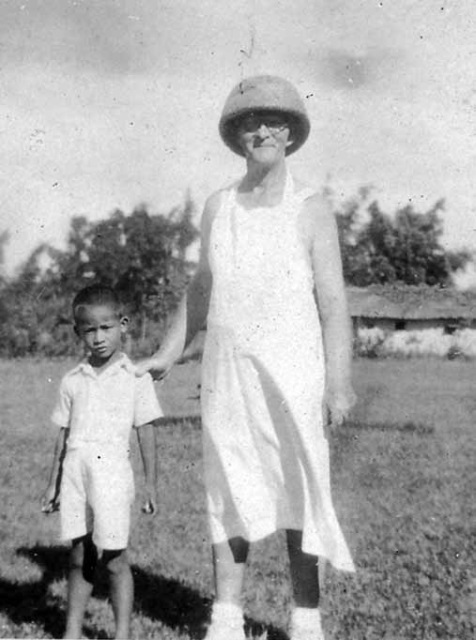
 Native sampans on the Brahmaputra River
Native sampans on the Brahmaputra River
